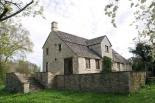
I was intrigued to see that the US Department of Agriculture is to unveil a new hardiness zone map this Wednesday, which I'm sure will come as some relief to America's 80 million gardeners.
There have been proposed alterations to this map during the past 10 years, mainly at the instigation of the American Horticultural Society, but this is the first official government update since 1990, I believe.
Given that Americans are far, far more dependent on their hardiness zone information than we are here in the UK, and that climate change statistics have shown a steady upward trend over the past few years, I expect many of our friends across the Atlantic will be saying: "About time too!"
It's very difficult to equate US hardiness zones to the UK. London, for example, is allegedly the equivalent of zone 9 in the US, which puts it on a par with San Antonio, TX, New Orleans, LA and San Francisco, CA. I wish!
And while any American gardener will be able to tell you instantly whether they are in Zone 7 (Richmond, VA) or Zone 10 (San Diego, CA), they will also tell you that the hardiness zone is only part of the story. It's an important part - it basically tells you what is going to get through the winter - but it doesn't take into account summer temperatures, or humidity, or snow cover, or light levels and so on.
It's the same here in the UK. It's well known that in London, you can push the envelope a bit when it comes to growing exotics, because London is an urban heat island (UHI), and temperatures can be up to 7 or 8C(46F) higher than in the surrounding countryside.
Being an island (or group of islands), Britain also benefits from a temperate maritime climate, and this becomes more pronounced the closer to the coast you are. The west and especially the south-west are further protected by the Gulf Stream.
But just as the hardiness zones are just the start of the "will it grow?" story, even in the UK it's always a good idea, I've found, to keep an open mind about your own garden's microclimate.
Conventional wisdom has it that the south side of a garden will be reasonably warm and sunny, the north side will be shadier and cooler, the east side will get early sun and the west will get afternoon and evening warmth.
That's true - up to a point. If I want to grow something that needs lots of sun, such as tulips, or buddleia, I grow them on the south-facing side. My garden faces south-west, and it's sheltered by mature trees, so it's a warm garden. But the existence of that shelter means that some areas are shaded. It doesn't matter how warm those areas are, some plants just won't do well there. Crocosmia, for example, sulks in certain parts of my garden, but runs riot in others.
I have a Campsis grandiflora on the south-facing fence (below). But while it never seems to suffer from frost damage, it needs good light levels from spring onwards to coax it into flower. Just being on the sunny side isn't really enough. It flowered this summer, because we had a very hot spring - but even then, not until the middle of August. It was a bit like watching one of your children put their shoes on very, very slowly - I wanted to shout: "If you don't hurry up, it'll be too late!"

Cannas (below), on the other hand, don't seem to be quite so fussy. This bit of the garden is north-facing, although it gets quite a lot of light all day. Can you see the tree fern on the left of the picture behind the cannas? I don't need to protect it at all during winter - because on the other side of that fence is my neighbour Peter's garden office.
Peter works in there most of the day - with heating on in winter, obviously - so the tree fern, along with a tetrapanax and a trachelospermum, has a very cosy little life. It's so warm that the big fatsia self-seeds. You can just see a little seedling on the left that has started growing in the pot belonging to the tetrapanax.

Indeed, all along that fence on the left are various sheds belonging to neighbours. I'm near a corner, so I have five gardens backing on to mine at right angles. People usually put their sheds at the end of the garden, so ironically, what should be the coldest place in my garden is one of the best-insulated.
On the south side, my neighbour Ruth's garden runs parallel to mine and, yes, her sheds are at the end of her garden. So my sunny south-facing fence has absolutely no protection at all.
Sometimes Ruth and I think it would be nice to have a lovely big wall between us - not because we don't get on, you understand, but because it would retain the heat, and we could have lean-to mini greenhouses, or wall-mounted fountains, or lots of other interesting things instead of our half-rotted fence with its rickety trellis. Sorry, MY half-rotted fence - I think it's my responsibility.
Then we look at all the things we would have to move, untie, cut back or generally deal with in order to achieve this, and we think - no, that fence will do another year...




































